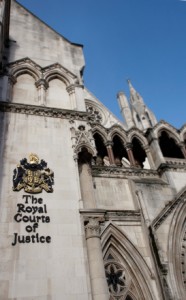A former fixed-share partner at south-coast law firm Lester Aldridge has lost his appeal against a ruling that he was a partner and not an employee in the limited liability partnership (LLP) and so unable to claim unfair dismissal.
The Court of Appeal upheld earlier rulings from the Employment Tribunal and Employment Appeal Tribunal, with Lord Justice Rimer saying that had Martin Tiffin been found to be an employee, his contract of employment would have been “remarkable”.
The tribunals found that there is no statutory provision or authority which states that a partner must have a certain minimum number or types of rights to vote or participate in management decisions, or that their share of profits or contribution to the partnership must reach a certain level.
In fact, Lord Justice Rimer said it is not a prerequisite of the status of partner that he should assume a role in the management of the partnership. He said it was “impossible” to say the original tribunal’s decision was perverse.
After four years of work
ing in the property department at Lester Aldridge and a brief spell as a salaried partner, Mr Tiffin became a fixed-share partner in 2006. A year later the firm became an LLP. Under the members’ agreement, fixed-share partners had a limited vote at members meetings.
Mr Tiffin was paid an annual fixed share of profits of £62,500 plus five profit-share points worth about £7,000 (some other partners at the firm had up to 250 points). He had to contribute £5,000 to the partnership, and another £1,250 after the firm became an LLP; full equity partners contributed £100,000, subsequently increased to £150,000. Other differences in his employment status from being an associate included a change in National Insurance contribution class.
Lord Justice Rimer said it was “tolerably obvious” that the members’ agreement aimed to create a partnership relationship between the full equity partners and the fixed share partners.
Though their commercial interests were different, “all had to contribute capital. All had a prospect of a share of profits depending upon the performance of the LLP in any particular accounting year. All had a prospect of a share in the surplus assets on a winding up. All had a voice in the management of the affairs of the LLP”. These elements were all characteristics of partnership, the judge said.
The agreement instead drew a contrast with salaried partners, who it made clear were employees.














